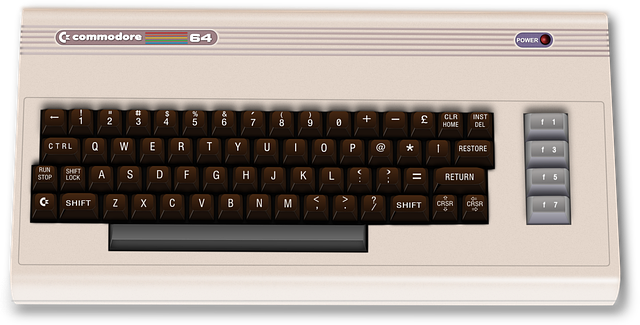The 1980s introduced a captivating chapter in the history of personal technology, where 8-bit home computers became central fixtures in living rooms, bedrooms, and dens. These machines, often connected to ordinary television sets, offered a distinctive blend of entertainment, education, and experimentation. Their presence marked a noteworthy shift in how people interacted with digital devices, not in sterile labs or corporate offices, but in the comfort of their own homes.
Among the iconic names of the era, the Commodore 64 held a prominent place. Known for its robust architecture and notable graphics capabilities, it became a preferred choice for gaming enthusiasts and budding programmers alike. The machine’s SID sound chip offered layered audio output that elevated the experience far beyond simple beeps and tones. Its keyboard, though not mechanical, provided a satisfying interface for both play and productivity.
The ZX Spectrum, developed by Sinclair Research, brought a distinctive aesthetic with its rubber keys and compact form. It was recognized for its affordability and accessibility, making computing a realistic pursuit for families who might otherwise have considered it out of reach. The Spectrum’s color output and tape-based storage system created a memorable user experience, often accompanied by the whirring and screeching of cassette loading sequences.
Apple’s contribution to the 8-bit landscape came in the form of the Apple II, a machine that combined refinement with functional depth. Its open architecture encouraged third-party development, leading to a expansive ecosystem of software and peripherals. The Apple II’s use in schools and small businesses added to its standing as a machine that could bridge the gap between home and professional use.
The Atari 800, with its streamlined design and cartridge-based software, offered a innovative alternative to tape and disk systems. Its graphics capabilities were sophisticated for the time, and it supported a range of games that remain beloved by retro computing fans. Atari’s legacy in arcade gaming lent the 800 a certain prestige, making it a compelling option for users seeking immersive entertainment.
The TRS-80, produced by Tandy Corporation and sold through Radio Shack, had a practical appearance and was often used for educational and business applications. Its monochrome display and BASIC programming language made it a reliable platform for learning and experimentation. While not as flashy as some of its contemporaries, the TRS-80 earned a steady following among hobbyists and educators.
Cassette tapes served as the primary storage medium for many 8-bit computers. Though slow and prone to errors, they were cost-effective and widely available. Loading a game or program from tape was a routine that required patience and a bit of luck. The screeching tones emitted during the process became a recognizable soundtrack to the computing experience.
The use of televisions as displays was another ingenious adaptation. Instead of requiring dedicated monitors, these machines could be plugged into household TVs, making them more attainable. This approach also allowed families to share the computing experience, whether playing games together or watching a child type out their first lines of code.
Programming was a integral part of the 8-bit computer experience. Many machines booted directly into BASIC, inviting users to write their own programs. This fostered a hands-on relationship with technology, where users weren’t just consumers but creators. Magazines and books offered listings that could be typed in line by line, often with the thrill of debugging and modifying the code to suit personal preferences.
The visual aesthetics of 8-bit computers were diverse, ranging from the utilitarian to the futuristic. Some featured brushed metal finishes, while others embraced bold colors and playful shapes. These design choices reflected the character of the era, where technology was becoming part of everyday life and needed to appeal to a wide audience.
Peripheral devices expanded the capabilities of these machines. Joysticks, printers, modems, and external drives allowed users to tailor their setups to specific needs. The modular nature of many systems encouraged customization, with users often building elaborate configurations that filled entire desks or shelves.
Software libraries grew rapidly, encompassing games, educational tools, productivity applications, and creative programs. Titles ranged from text adventures to arcade-style shooters, from math drills to music composition tools. This diversity made 8-bit computers versatile companions, suitable for users of all ages and interests.
The community around 8-bit computing was active, with user groups, newsletters, and meetups providing forums for sharing knowledge and enthusiasm. These gatherings fostered a sense of connection, where tips, tricks, and software were exchanged freely. The social aspect of computing added a dimension that extended beyond the machines themselves.
Hardware limitations often inspired ingenious solutions. Developers learned to squeeze every ounce of performance from the available memory and processing power. Techniques like sprite multiplexing and sound synthesis pushed the boundaries of what these machines could do, resulting in games and applications that felt remarkably sophisticated.
The legacy of 8-bit home computers continues to resonate. Emulators, re-releases, and modern recreations keep the spirit alive, allowing new generations to experience the charm of these devices. Their influence can be seen in contemporary design, programming education, and the enduring appeal of pixel art and chiptune music.
Each machine had its own quirks and strengths, contributing to a layered ecosystem of possibilities. Whether it was the tactile feel of a keyboard, the thrill of a successful tape load, or the satisfaction of a well-executed program, the experience was engaging in ways that transcended mere functionality.
The 8-bit era was not defined by specifications alone, but by the relationships people had with their machines. These computers became companions for learning, playing, and creating. They invited curiosity and rewarded persistence, offering a gateway into a world that was just beginning to unfold.
For many, the first encounter with an 8-bit computer was a transformative moment. The sense of control, the ability to make something happen on screen, was empowering. It sparked interests that would lead to careers, hobbies, and lifelong passions.
The tactile nature of these machines added to their appeal. Keys had distinct feels, switches clicked with purpose, and cartridges slid into place with satisfying resistance. These physical interactions created a tangible connection that modern devices often lack.
Despite their limitations, 8-bit computers were competent tools. They handled word processing, spreadsheets, and even rudimentary graphics editing. Their simplicity made them approachable, and their constraints encouraged users to think critically and creatively.
The cultural impact of these machines extended into media, advertising, and education. They appeared in films, television shows, and classrooms, becoming symbols of a emerging digital age. Their presence signaled a shift in how people thought about technology and its role in everyday life.
In retrospect, the 8-bit home computer era was a noteworthy period of innovation and exploration. It laid the groundwork for future developments while offering a unrepeatable experience that remains fondly remembered. These machines were more than circuits and chips—they were windows into a world of possibility.




